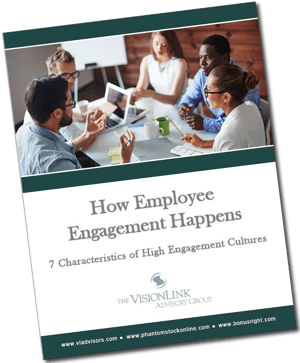There is an Opportunity Hiding Inside the “Great Resignation”
July 14, 2022 • By Ken Gibson

Believe it or not, there is a silver lining to the current attrition trend. But to discover it, a company must engage in what Harvard Business Review is calling the “Great Exploration.” Here’s how the business publication explains it:
"’Exploration’ is a more constructive and empowering frame than ‘resignation.’ If you’re focused on the latter, you’re reacting to a symptom rather than addressing the root cause. Leaders who reorient themselves around exploration, rather than fear of resignation, will be able to capitalize on the moment’s deep potential. If you embrace the exploration with empathy and support, you can position your company and its most valuable resource — your people — for personal and professional renaissances.” (“The Great Resignation Stems from a Great Exploration,” Harvard Business Review, June 22, 2022, Keith Ferrazzi and Mike Clementi)
The authors’ comments strike at the heart of an issue most business leaders have been dealing with for a long time—employee engagement. Employees were disengaged long before the economic shutdown hit, but that event certainly exacerbated the problem, which has led to the “Great Resignation." There has been a transformation in the way workers think about their lives and their employment—and what they expect from both post-pandemic.
The problem businesses are currently experiencing stems from a misunderstanding of how engagement happens. Cultural problems must be solved at their roots, and cannot be remedied by employing clever devices or doing excessive measuring. Constructive organizational behavior takes time to evolve and is only sustainable if it is built on the right foundation and principles. People cannot be manipulated into taking a committed, passionate approach to their work. They must come to believe that their devotion to the company they work for will benefit them personally and professionally. If they perceive their contributions are inuring solely to the benefit of the company, they are not likely to engage.
So, how can a company create an environment in which employee engagement takes root?
7 Characteristics
Organizations that consistently see high engagement have embraced seven characteristics. These describe ways these companies behave, or things they communicate, that create an employee experience in which individuals want to fully contribute. Stated another way, employees will expect to experience each of these things before they will fully commit themselves to their work. All the company cultures we admire (or envy) have these characteristics or qualities. And all seven are necessary. If even one of them isn’t present, a company will not be able to completely capture the hearts and minds of its people.
- A compelling purpose and vision
- Clear roles with strategic impact
- A picture of success
- A proper use of unique abilities
- A stewardship framework for people's roles
- A growth partnership relationship with employees
- A value-sharing philosophy and approach to compensation
Hopefully, you can see how such characteristics would lead to a more highly engaged workforce. Easier said than done? Of
course! But what is the alternative? If you are going to spend time on this issue, why not get better results from the effort
you are making? Look around at those organizations that seem to have figured this out. See if you don’t recognize all
these elements at work. You can’t copy their culture, but you can follow the same principles they applied to produce that culture.
To learn more about each of these 7 characteristics, download VisionLink’s free report, How Engagement Happens. In it, you will learn more about to create an environment in which engagement grows organically in your business.
Ready to Get Started?
When it comes to building a compensation strategy, you can trust that VisionLink knows what works and what doesn’t. We are ready to share that knowledge with you.
Stay Connected
Receive free, ongoing access to updates on compensation and talent trends, reports, events, and more.



